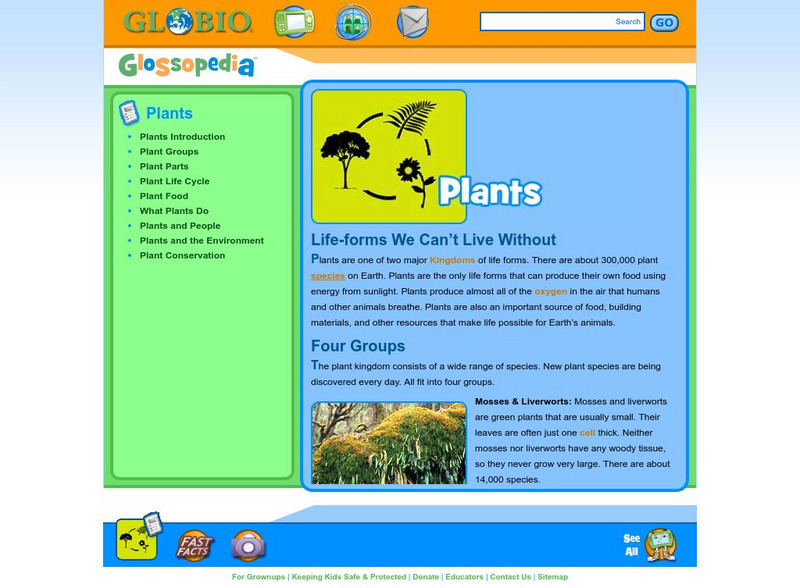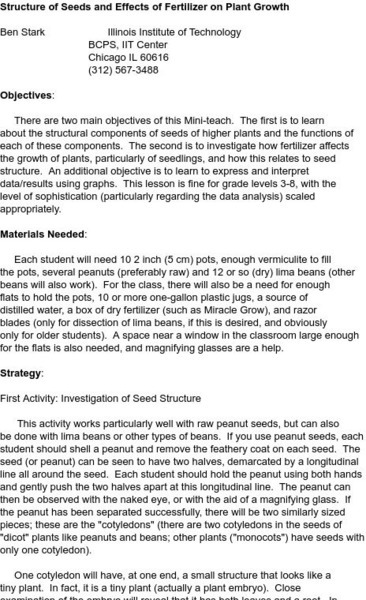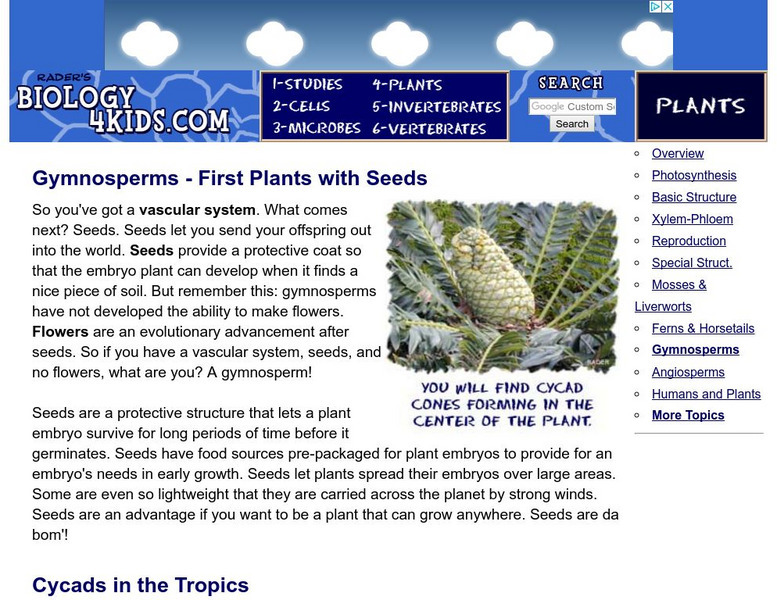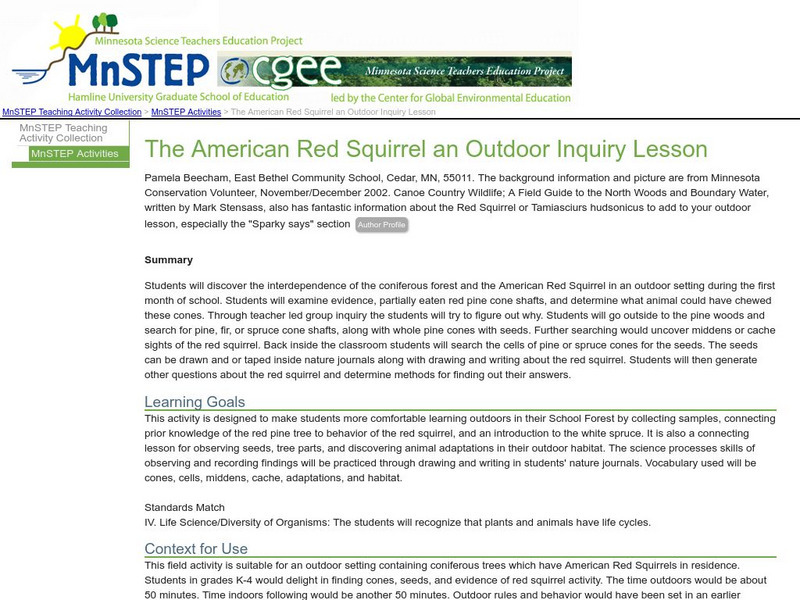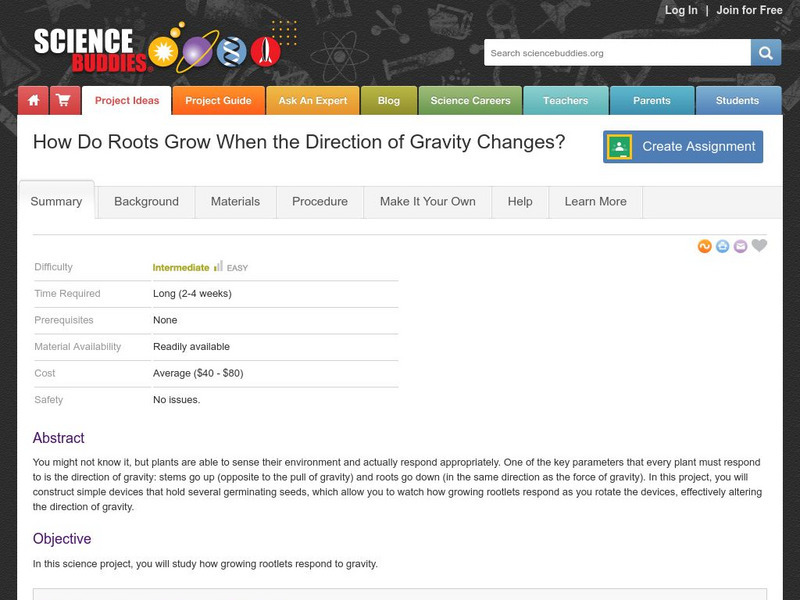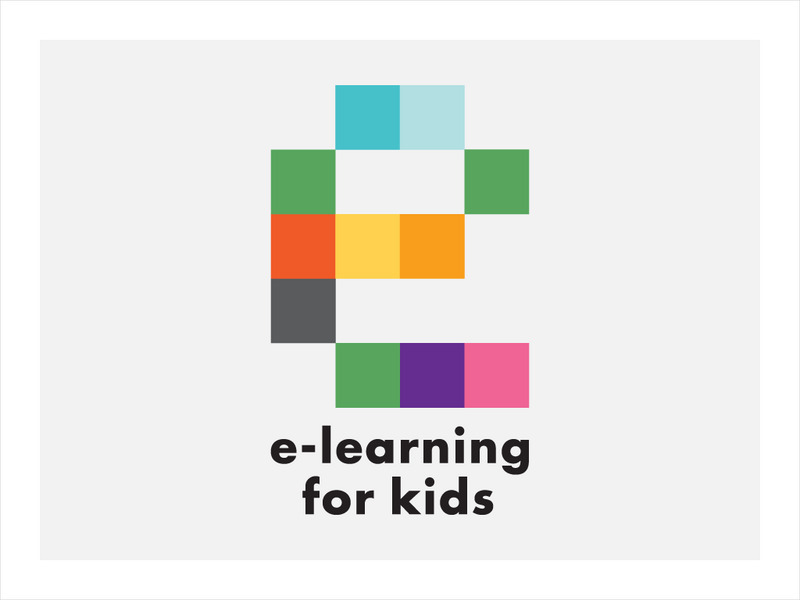Hi, what do you want to do?
Globio
Glossopedia: Plants
Plants are one of the two major Kingdoms of living creatures on the Earth. They are the only beings which produce their own food. Additionally, plants are necessary for animals to live. Plant anatomy, life cycle, reproduction and the...
Science and Mathematics Initiative for Learning Enhancement (SMILE)
Smile: Structure of Seeds and Effects of Fertilizer on Plants
In this lesson plan, students identify parts of seeds and the effect of fertilizer on their germination and development.
Children's Museum
The Children's Museum of Indianapolis: Plants Alive: Garden in a Glove Journal
Students will observe the germination and growth of plants from seeds over the course of several days, and record their observations in a journal.
Unite for Literacy
Unite for Literacy: Plants and Food: Dandelion Days
Read about the life cycle of dandelions from their first appearance in the spring. Includes audio narration in 16 additional languages with text in English.
Other
Science and Kids Activities: Pollination and Seed Dispersal
Second graders learn how plants depend on animals to disperse their seeds. Students will learn about ways that animals can disperse seeds. They will design their own model and compare it to the real action of plants and animals. In the...
Virginia Tech
Virginia Tech: Flower and Tree Reproduction
This is the reproduction chapter from an online text, courtesy of the Forest Biology Department of Virginia Tech. Learn about trees, their flowers, and other details of their reproductive cycle.
Science Education Resource Center at Carleton College
Serc: Mn Step: Seeds to Plants: How to Grow a Plant
An experiment where first-graders plant seeds and monitor their growth. Prior to planting, they decide on an inquiry question, and how they will find out the answer through the experiment.
HotChalk
Hot Chalk: Lesson Plans Page: Kick Off Seed Explorations
This simple lesson plan is designed to have young students become more familiar with fruit seeds by identifying fruit that contains seeds/no seeds, gathering seeds from fruit, explaining the importance of seeds, explaining that seeds...
PBS
Pbs Teachers:a Model of Seed Dispersal
Investigate propagation systems in plants, and explain the ways some animals disperse seeds through their digestive processes. Role-play and map the daily travels of one seed-bearing animal to explore the migration of seeds.
Ducksters
Ducksters: Biology for Kids: Flowering Plants
Kids learn about flowering plants in the science of biology including their life-cycle, structures of a flower, fruit, seeds, and pollination.
CK-12 Foundation
Ck 12: Life Science: 7.9 Seed Dispersal
Learn how plants disperse their seeds for successful reproduction.
HotChalk
Hot Chalk: Lesson Plans Page: Plants and Animals
In this lesson plan, young learners will be able to identify a plant's parts, explain their functions, diagram a plant, and create a mobile to demonstrate their understanding.
Biology 4 kids
Biology4 Kids: Angiosperms First Plants With Flowers
This engaging article on angiosperms offers good descriptions and background on these seed bearing plants. Learn about their characteristics and what makes these plants different from gymnosperms.
TeachEngineering
Teach Engineering: Planting Thoughts
Young scholars gain an understanding of the parts of a plant, plant types and how they produce their own food from sunlight through photosynthesis. They also learn about transpiration, the process by which plants release moisture to the...
Texas A&M University
Tamu: Aggie Horticulture: School Gardens
Teachers and students interested in finding information on how to start a garden in their school will find this site very helpful. This site, sponsored by the Department of Horticulture Sciences at Texas A&M University, includes a...
Biology 4 kids
Biology4 Kids: Gymnosperms First Plants With Seeds
This engaging article on gymnosperms offers good descriptions and background on these seed bearing plants. Learn about their characteristics and what makes these plants different from angiosperms.
Alabama Learning Exchange
Alex: Seeds: How They Grow
The students will be collecting, germinating and planting seeds to show the process of plant growth. The students will be recording the information in their science journal. In addition, the students will be observing the water cycle as...
Curated OER
Conifers Use Cones and Seeds Since Flowering Plants Had Not Appeared.
This engaging article on gymnosperms offers good descriptions and background on these seed bearing plants. Learn about their characteristics and what makes these plants different from angiosperms.
Genome British Columbia
Genome British Columbia: Terminator Technology for Gm Crops
In 1998, American scientists developed terminator seeds which grew into plants that were unable to reproduce. While this practice prevents the dangerous flow of genes to the wild, it has some disadvantages, for example, the added expense...
Science Education Resource Center at Carleton College
Serc: Mn Step: The American Red Squirrel an Outdoor Inquiry Lesson
For this activity, students are presented with red pine cones that have been partly eaten by the American Red Squirrel, a fact that is not divulged to them at this stage. After a discussion of the possibilities, the class takes a walk in...
Science Buddies
Science Buddies: How Do Roots Grow When the Direction of Gravity Changes?
You might not know it, but plants are able to sense their environment and actually respond appropriately. One of the key parameters that every plant must respond to is the direction of gravity: stems go up (opposite to the pull of...
Other
Perspective: The Plant Kingdom
Did you know their are about 270,000 plant species? This webpage investigates the phyla of the plant kingdom. Learn how plants are classified based on their tissue structure, seed structure, and stature. Each division is described with...
E-learning for Kids
E Learning for Kids: Science: Hawaii: What Happens in the Life Cycle of a Flowering Plant?
Sophie and Max are growing plants in their greenhouse. Join them, and learn about the life cycle of a plant.





